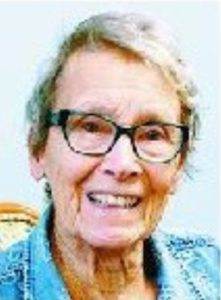By Davy Crockett
I was sad to read today that ultrarunning pioneer Sandra Kiddy passed away on September 16, 2018 at the age of 81.
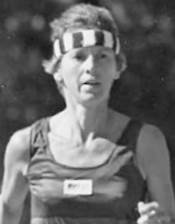

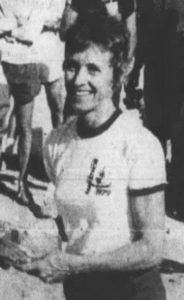

Sandra (called Sandy by her friends) started running multiple marathons a year. Her first win came in 1977 when she won the Orange County Marathon in 2:58, a new course record. Not only was she winning marathons, but her competitive nature was also in the cards. Her name was in the paper multiple times doing well in Bridge tournaments.
Sandra at age 42 burst on the scene of ultras when she ran in the Southern Pacific AAU 50K at Camarillo, California in 1979. She did well, very well, in fact fantastic! She won and set an American Record of 3:37, beating the current record by three minutes.
Throughout her ultra career, Sandra continued to race marathons. She said, “After I began running farther than the marathon, I would use races for speed work. I have done speed work on the track, but I preferred races where refreshments were available and the excitement of the race made me work harder.”
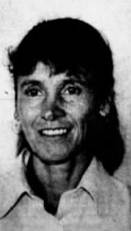

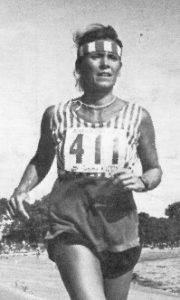

Now that she had tackled the 50Ks and 50-mile races with dominance, it was time to turn to the 100K which was the ultra distance recognized internationally. She said, “If you consider yourself an ultramarathon runner, you can’t really do that unless you run a 100K race.” At AJMA Ultras, she dominated again and won with a time of 7:59:59. She was only the fourth woman in history to break 8:00 in the 100K. She had bad stomach issues during the race that lingered for another three weeks. She vowed to not race that distance again.
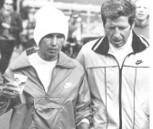

Next up, she wanted to tackle the 100-miler. Why? “Because I knew I could go more slowly.” Her longest training run up to this point had been 26 miles. So in 1983, she went to a special women’s invitational World Cup 100 Mile event in Germany with 22 runners. The race started at midnight. She battled with tough competition including Monika Kuno of West Germany, who led for the first 50 miles. At mile 40 Sandra decided she wasn’t going to worry about who was leading, that so much could happen in that next 60 miles. At the 100K mark, Sandra had a 21-second lead. It was close through mile 94, but Sandra pulled away for the win with a time of 15:40:50, claiming the 100-mile World Record beating Marcy Schwam’s best by three minutes. (Donna Hudson broke the record a few months later in 1983). Sandra said she didn’t concentrate on getting the record until near the end. “It was a race right up to the last 10K lap. It wasn’t until then that Fred felt sure I could win and we focused on the record. We knew I would be able to bring it in strongly and I did.” (Marshall, 1983 Ultradistance Summary, 11).
At the end of 1983 Sandra ran in the Tallahassee Ultradistance Classic and set a world masters record in the 50K of 3:32 on a flat 9-lap lasso-shaped course. She hit the marathon mark in less than three hours. Not only was Sandra fast, but her husband Fred was too. Fred ran it in 3:16 at the age of 49.
After she finished that 100-miler in 1983, Sandra said that she wanted to try 100 miles again, feeling confident that she could drop her time by an hour. But she went back to the more speedy 100Ks. Her dominance in the 100K continued in 1984. She was the outright winner at Edmund Fitzgerald 100K with a time of 7:49, just two minutes short of Marcy Schwam’s World Record. She was put on the USA 100K team and was able to compete in the 100K in Belgium and later in Spain.
In 1984 Sandra ran in the Wolfpack 50-Mile race at Columbus, Ohio, and road course with four-mile loops. She said, “The course itself was fairly difficult for me, thanks to a short, steep hill which was only a 15-20-foot rise, but which we had to go over 24 times. It took a toll on my legs.” But at age 47 she set a Masters World Record of 6:09.
Also in 1984 Sandra ran the Edmund Fitzgerald 100K at Duluth, Minnesota. She said, “It was the perfect race for me. I soundly smashed 8 hours. The weather was cool and the course was rolling. None of the hills were so steep as to slow a runner’s pace sharply, and the down sides were gentle enough that you didn’t go out of control or have to break your stride. It was the first ultra in which I didn’t have any mental or physical depression, the kind of race every runner hopes for.” As she approached the finish, the lone runner ahead of her, Harry Sloan was struggling mightily. Sandra explained, “After more than 62 miles, I passed the leader when he was in agony with less than 50 yards to go. The finish line was on top of a short, rather steep hill and he ran out of gas right at the crest. I went by him with about 30 yard left.” She was the overall winner with 7:49:16, a world masters record and the fastest women’s 100K ever run on American soil at that time.” (Marshall, 1984 Ultradistance Summary, 62).
Early in 1985 Sandra was sick for four weeks and didn’t run as well as she hoped for several months including a 100K race in Holland and London to Brighton. She became sick again but set her sights on doing well at the end of the years.
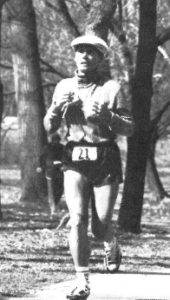

Sandra tested her speed at a popular trail race, the 1986 Ice Age 50 in Wisconsin, and won. In 1986 both Sandra and Fred won the Palm Springs Marathon. By 1989 they moved to Bishop, California.
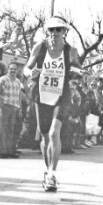

Sandra was named “Ultrarunner of the Year” twice, for 1986 and 1987 . Reflecting on her running accomplishments she said, “Most aspects of my life have been fairly average, but in ultramarathoning I’ve found something I can really do well.” In her early 50s, she struggled with a persistent hamstring injury and backed off her racing. In 1990 at age 53, she had the honor of running in “The Greatest 100K Road Race in History,” at the World 100K Championship held in the United States at Duluth, Minnesota. She ran in 9:23, finishing in 13th.
For her last hurrah running ultras, she went out in style by being the oldest athlete to ever be on a USA national team. She competed in the 1992 World 100K Championship in Spain and at age 55 ran 8:42 setting a world age-group record.
